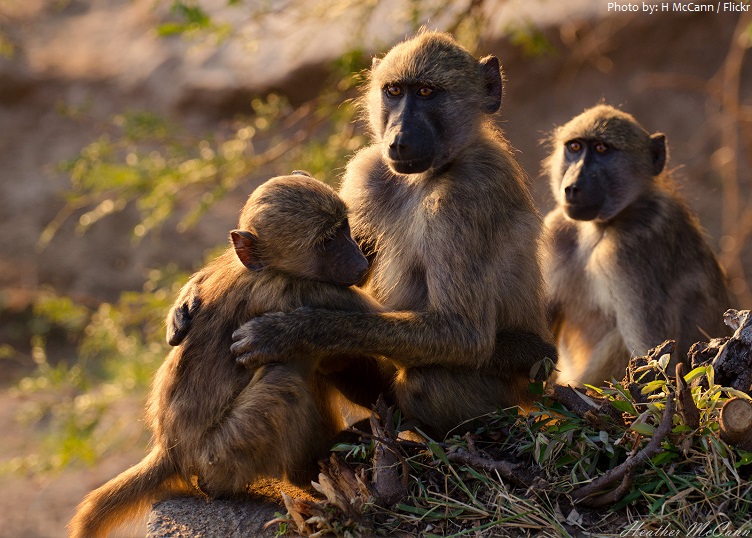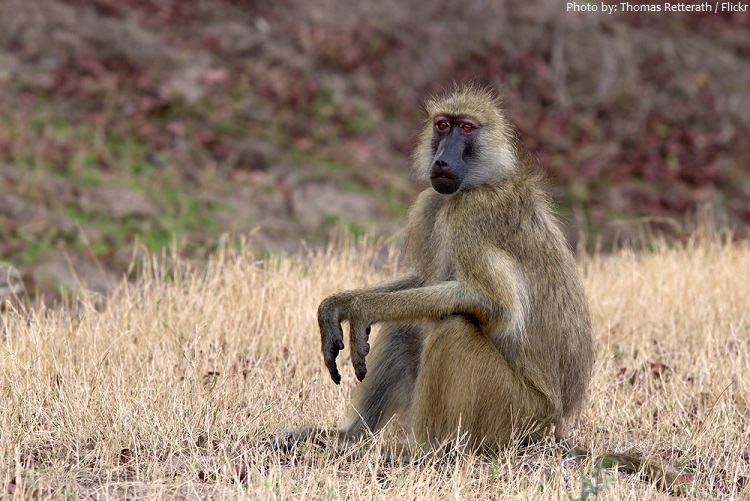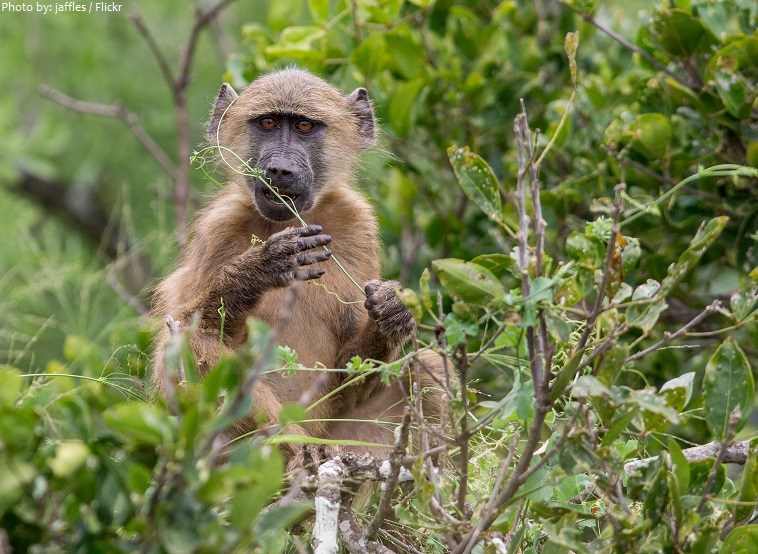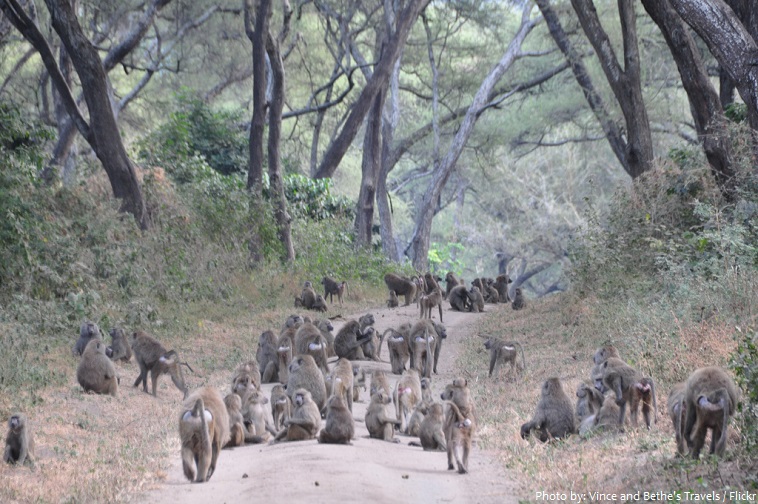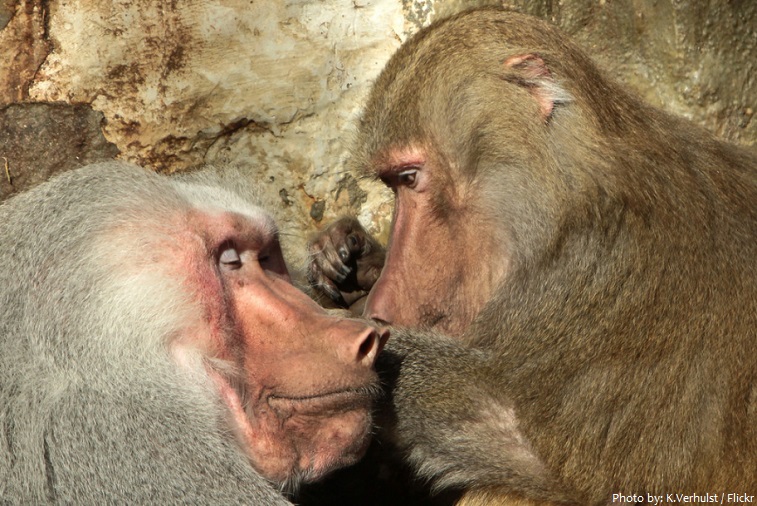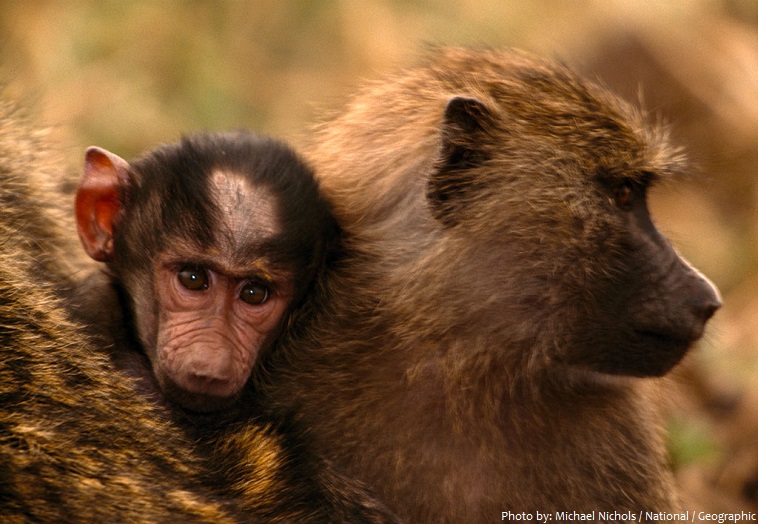Baboons are Old World monkeys that belong to the genus Papio.
There are five species of baboon — olive, yellow, chacma, Guinea, and hamadryas — scattered across various habitats in Africa and Arabia.
Baboons largely inhabit areas of open woodlands and savannah, with some found in tropical forests.
The lifespan is about 30 years in the wild and up to 45 years in captivity.
Baboons are some of the largest monkeys in the world.
They range in size and weight depending on species.
The Guinea baboon is 50 cm (20 in) and weighs only 14 kg (31 lb), while the largest can be 120 cm (47 in) and weigh 40 kg (88 lb).
Female baboons are considerably smaller than males.
All baboons have long, dog-like muzzles, heavy, powerful jaws with sharp canine teeth, close-set eyes, thick fur except on their muzzles, short tails, and rough spots on their protruding buttocks, called ischial callosities. These calluses are nerveless, hairless pads of skin that provide for the sitting comfort of the baboon.
Their color varies from olive-green to yellow, silver and brown depending on the species.
Baboons are diurnal animals, meaning that they are active during the day.
Unlike most monkeys baboons are terrestrial (ground dwelling). They spend most of their daylight hours on the ground, but they forage both in the trees and on the ground and they sleep in trees or on cliffs where they are safe from predators.
These ground-living primates are quadrupeds, walking on all four legs.
Like other Old World monkeys, baboons do not have prehensile (gripping) tails.
Baboons are classified as omnivores, which means they eat both plants and animals. Grass is an important part of their diet, but baboons also eat pods, roots, blossoms, fruits, sap and bark from a variety of trees and plants. Baboons eat meat in small quantities, and their meat-based meals include small antelopes, fish, birds, rabbits and shellfish.
Baboons are among the most social and affiliative animals and strong social bonds are fundamental to their lives. Their social behavior is usualy matrilineal, in which a network of social relationships are sustained over three generations from the female members of the species.
A troop of baboons can range in number from 10 to over 200 members, depending upon the availability of food. The baboon troop consists of related bands composed of several clans, where each clan may have a number of smaller harem families made up of mothers, their children, and a male. Female baboons remain with the group into which they are born for the duration of their lives, while the males leave to join other troops as they become mature.
Unlike other baboon species, the hamadryas have a patriarchal “One Male Unit” social structure. Females groom their “leader” and males compete fiercely for their status.
Baboons have a complex system of communication that includes vocalizations, facial expressions, posturing, and gesturing.
They have at least 10 different vocalizations they use to communicate. These vocalizations include grunts, lip-smacking, screams, and alarm calls.
During their rest periods, baboons spend considerable time grooming one another, which helps to reinforce their social bonds.
Baboons are not territorial. Rather, each baboon troop occupies a ‘home range’, part of which overlaps with the home range of other troops. Usually different troops avoid using these overlapping areas at the same time, and troops and home ranges shift fluidly in accordance with one another.
Baboons breed year-round, though some populations show peaks in mating and births at certain times of the year.
When a female baboon is ready to mate, her bottom becomes swollen and red as a sign to the males.
After mating, a baboon female has a gestation period of around six months. Typically, a female will only give birth to one offspring at a time, though twins have been recorded.
The females tend to be the primary caretaker of the young, although several females will share the duties for all of their offspring.
After about one year, the young animals are weaned. They reach sexual maturity in five to eight years.
Their natural predators are crocodiles, lions, hyenas, leopards and cheetahs.
Humans kill baboons for a variety of reasons. Baboons can be killed because of their tendency to be viewed as agricultural pests as well as for their skins—this is more common with the hamadryas baboon.
Habitat loss due to overgrazing, agricultural expansion, irrigation projects, and overall human settlement growth is a threat to baboons.
The word “baboon” comes from “babouin,” the name given to them by the French naturalist Buffon.
Baboons are Old World monkeys that split from humans and apes on the primate family tree 30 million years ago.
Sharing 91% DNA similarities with humans, this particular monkey is often argued to be an ape instead. However, science has placed them into the area of being a monkey based on a variety of contributing factors.
Baboons have the same number of teeth and dental pattern as human beings.
In 2015 researchers found the oldest baboon fossil dating 2 million years ago.
In Egyptian mythology, Babi was the deification of the hamadryas baboon and was therefore a sacred animal. It was known as the attendant of Thoth, so is also called the sacred baboon.
